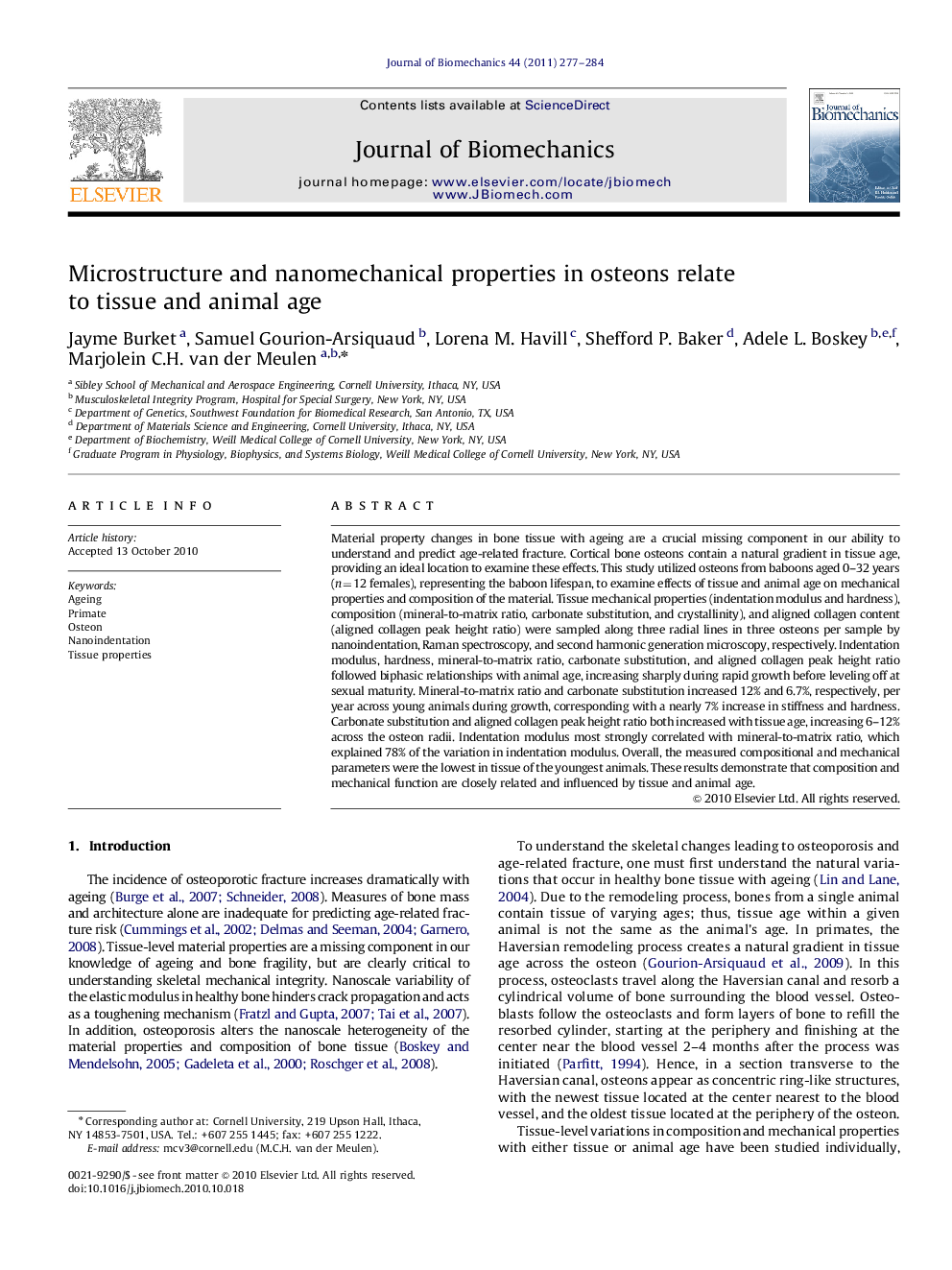| Article ID | Journal | Published Year | Pages | File Type |
|---|---|---|---|---|
| 873235 | Journal of Biomechanics | 2011 | 8 Pages |
Material property changes in bone tissue with ageing are a crucial missing component in our ability to understand and predict age-related fracture. Cortical bone osteons contain a natural gradient in tissue age, providing an ideal location to examine these effects. This study utilized osteons from baboons aged 0–32 years (n=12 females), representing the baboon lifespan, to examine effects of tissue and animal age on mechanical properties and composition of the material. Tissue mechanical properties (indentation modulus and hardness), composition (mineral-to-matrix ratio, carbonate substitution, and crystallinity), and aligned collagen content (aligned collagen peak height ratio) were sampled along three radial lines in three osteons per sample by nanoindentation, Raman spectroscopy, and second harmonic generation microscopy, respectively. Indentation modulus, hardness, mineral-to-matrix ratio, carbonate substitution, and aligned collagen peak height ratio followed biphasic relationships with animal age, increasing sharply during rapid growth before leveling off at sexual maturity. Mineral-to-matrix ratio and carbonate substitution increased 12% and 6.7%, respectively, per year across young animals during growth, corresponding with a nearly 7% increase in stiffness and hardness. Carbonate substitution and aligned collagen peak height ratio both increased with tissue age, increasing 6–12% across the osteon radii. Indentation modulus most strongly correlated with mineral-to-matrix ratio, which explained 78% of the variation in indentation modulus. Overall, the measured compositional and mechanical parameters were the lowest in tissue of the youngest animals. These results demonstrate that composition and mechanical function are closely related and influenced by tissue and animal age.
